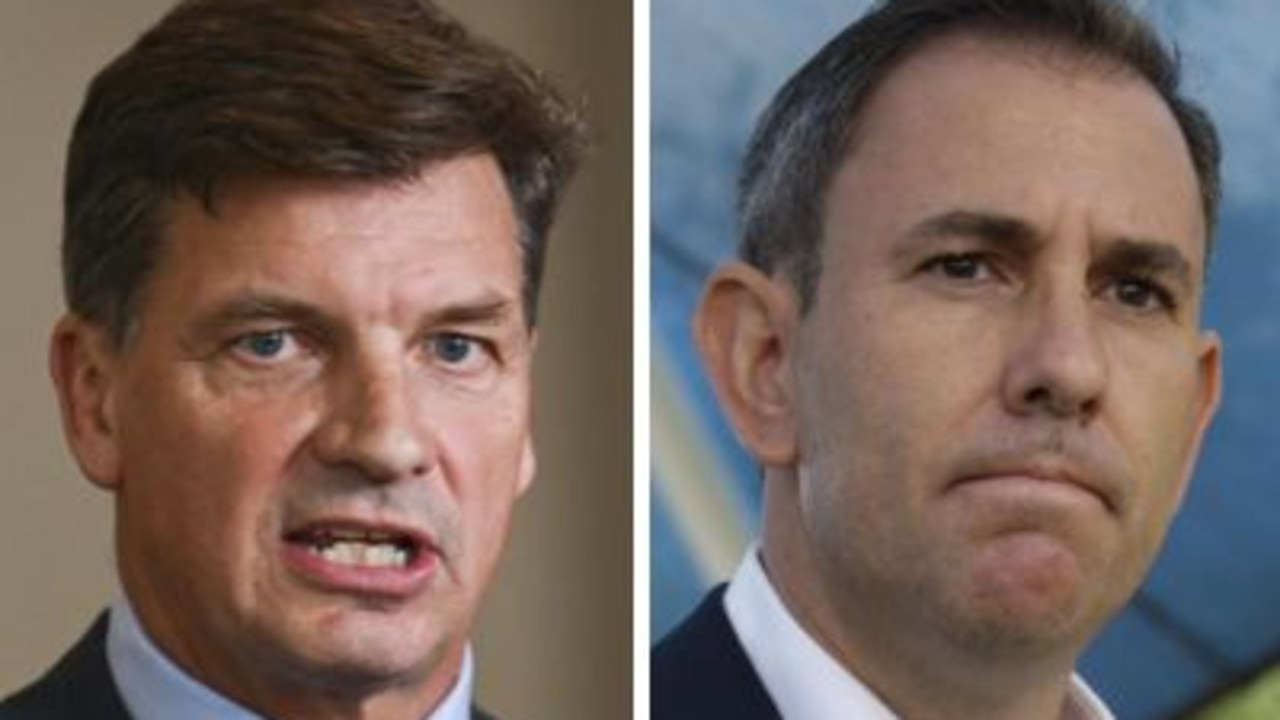Federal budget 2021: What we know and where the money is being spent
Josh Frydenberg has unveiled another big-spending budget aimed at steering Australia out of the pandemic. Here’s what you’ll get.
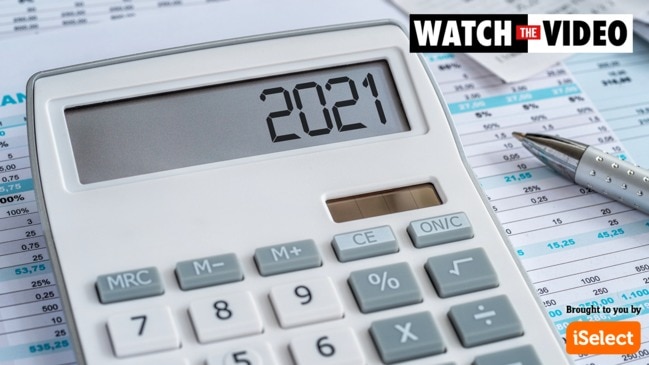
Josh Frydenberg has unveiled another big-spending budget on Tuesday aimed at steering Australia out of the pandemic, with working parents, the mental health sector and those in aged care the big winners.
The Treasurer had already revealed many of the details ahead of Tuesday night’s speech – his third since taking the job and the second in the space of six months, after 2020’s was delayed by COVID-19 – with a focus on driving unemployment down to pre-pandemic levels.
Outlining his strategy in a speech last month, Mr Frydenberg promised there would be no “sharp pivots towards austerity”, as the Morrison government avoids painful spending cuts in what is widely expected to be its last budget before the next election.
“We remain committed to lower taxes, containing the size of government, budget discipline and guaranteeing the delivery of essential services,” Mr Frydenberg said.
FREE INCOME TAX CALCULATOR: Find out how much you’ll get from the budget
“COVID-19 has had an unprecedented impact on our levels of government debt. As it has elsewhere around the world. Using the government’s balance sheet to limit the economic cost and longer term scarring stemming from this crisis, was a responsible and prudent response.”
Mr Frydenberg vowed the budget would “drive the unemployment rate lower”, from its current level of 5.6 per cent.
“We will not move to the second phase of our fiscal strategy until we are confident that we have secured the economic recovery,” he said.
“We first want to drive the unemployment rate down to where it was prior to the pandemic and then even lower. And we want to see that sustained.”
The budget revealed Australia’s deficit is $52.7 billion lower than expected this year thanks to a remarkable economic turnaround, but net debt will still peak at almost $1 trillion within four years.
Red ink on the balance sheet is expected to reach $161 billion this year – down from the record $213.7 billion in the 2020-21 pandemic budget.
Mr Frydenberg said almost half a million jobs had been created since the last budget, and there were 75,000 more Australians in jobs than before the pandemic.
It’s hoped the budget will help create more than 250,000 more jobs by the end of 2022-23.
The deficit is forecast to drop to $57 billion by 2024-25.
Here what’s been announced.
RELATED: Your five minute guide to the budget
First home buyers
As the Aussie dream falls further out of reach for many young Aussies, the government has put forward new support to help them crack the property market.
The New Home Guarantee, a scheme that allows first home buyers to build a new house or buy a freshly built home with a 5 per cent deposit, will have another 10,000 places for singles and couples added to it in the budget.
The government then guarantees up to 15 per cent of the loan under the scheme.
Meanwhile, the cap for the First Home Super Saver Scheme is being raised to $50,000 under the budget.
At the moment, anyone wanting to save a deposit for their first home can make voluntary contributions to their superannuation fund with a cap of $15,000 to take advantage of lower tax rates, but this cap has now been more than tripled.
Average earner tax cuts
The budget will offer one-off tax relief worth $1080 to low and middle income earners.
The Morrison government has extended the low and middle income tax offset that applies to workers earning less than $126,000 at a cost of $7 billion in Tuesday’s budget.
However, to reap the full benefit of up to $1080 you need to be earning less than $90,000 a year.
The offset is refunded when workers lodge their tax returns which means the money will flow for millions of workers from July. It was due to expire after July 1, 2021.
The LMITO, which is sometimes referred to as the “Lamington” tax cut, was first introduced in 2018-19 under a three-stage tax cut plan and was supposed to be axed when the stage two tax cuts were introduced but was extended due to the recession caused by the pandemic.
But despite the big-spending tax cut pledge to extend that offset to 2022 that will be sold as “new” tax cuts, the temporary extension sets up a tax trap because as soon as it’s withdrawn those workers face a tax increase of up to $1080.
Grattan Institute chief executive Danielle Wood said it was a good idea to extend the tax cuts last year but it set up a political problem.
“It wasn’t a bad thing to do but that’s what’s created the problem. And so next time, when you take it away, it’s an effective tax rise for that group,’’ she said.
The budget papers confirm the largesse could be axed next year – leaving these workers facing a higher tax bill.
Mark Chapman, director of tax communications at H&R Block said the tax offset is welcome for 10.2 million low and middle income Australians.
“However, let’s call this what it is and ignore the government spin; this isn’t a tax cut, its simply the deferral of a tax rise,” he said.
“Nobody should be counting the extra dollars in next year’s pay packets because there aren’t any; the tax burden for low and middle income individuals next year is exactly the same as it was this year. So, a cautious welcome but – please – let’s not sell it as a tax cut.”
Domestic violence prevention
After months of heated discussion about the welfare of women in Australia and several shocking cases of domestic violence making national headlines, the government has revealed a massive $1.1 billion package to combat the blight on our nation.
Broken down, this means the government will invest $164.8 million in providing financial support for women who escape domestic violence.
Under the package, for the next two years, victims can receive payments of up to $1500 in immediate cash and a further $3500 in kind for goods or direct payments of bonds, school fees or other items.
Additional funding of $12.6 million over three years will be provided for Safe Places program projects to renovate, build or purchase emergency accommodation for women and children fleeing a violent situation at home.
Hundreds of millions of dollars will also be spent on assistance to help victims navigate the legal system. This includes $129 million in increased funding for legal assistance services, to ensure that women can access the justice system.
A further $101.4 million will be spent to increase access to Children’s Contact Services, to ensure that separated parents are able to safely manage the contact and changeover of their children.
A total of $85 million will be used to expand family law frontline services to ensure that each family law court with a permanent judge has access to Family Advocacy and Support Services.
Finally, $60.8 million will be spent on directly funding reform of the family law courts, to significantly shorten the time separating families spend in litigation.
The government is further contributing $261.4 million to establish a new agreement with the states and territories for frontline family, domestic and sexual violence support services.
It will also invest $35.1 million in an effort to prevent violent attitudes developing in young people.
The government says it is also funding services to help perpetrators change their behaviour. Part of this will be the funding of $4.1 million over three years for the Co-ordinated Enforcement and Support to Eliminate (CEASE) Domestic Violence Program trial.
RELATED: Surprise change for part-time workers and mums

Tackling online abuse
The government will put $26.2 million towards improving the safety of online spaces for women and children.
Those who engage in online harassment could be tracked down more quickly thanks to a $18 million investment over two years for eSafety. The funding will allow the organisation to respond more quickly to reports of image-based abuse, adult cyber abuse, cyber-bullying and harmful online content
About $3 million over two years will be put towards implementing technologies that identify intimate images that have been shared without consent to help in the rapid removal of image-based abuse material.
A new program will also be developed to support children experiencing technology-facilitated abuse and there will be a new National Online Safety Awareness Campaign
Stamping out workplace harassment
An extra $20.5 million will be spent on preventing and responding to workplace sexual harassment including the implementation of the Respect@Work report.
That includes funding of $5.3 million for primary prevention programs, research into sexual harassment and other initiatives.
Funding will also be provided for frontline support to address sexual harassment in the workplace.
More money for dole recipients
The JobSeeker payment will be increased for almost two million Australians – but their obligations will also ramp up, giving them “intensive activity” to do after six months of unemployment.
The government will provide $9.5 billion over the next five years to increase support for people eligible for working-age payments including JobSeeker.
For Australians struggling to find work, this means an increase in the base rate of working-age payments by $50 per fortnight from April 1 this year.
The increase is expected to benefit 1.9 million Australians, and it applies to people on the Youth Allowance, Parenting Payment, Austudy, ABSTUDY Living Allowance, Partner Allowance, Widow Allowance, Special Benefit and Farm Household Allowance.
RELATED: Aussies who will get $2160 tax offset
The government has also increased the income-free area to $150 per fortnight for JobSeeker Payment and Youth Allowance, allowing recipients of these payments to earn more income before their payment begins to taper off.
The government will spend $197 million to “enable” job seekers to take part in an “intensive activity” after six months of unemployment, including participating in approved intensive short courses, with some job seekers required to participate in the Work for the Dole program.
It will spend $12 million to give stronger incentives through the Relocation Assistance to Take Up a Job program by providing the $2000 incentive payment upfront and expanding eligibility to allow job seekers to access the incentive when they take up ongoing work for more than 20 hours per week.
The government is also looking to weed out those are who are “not genuine in their job search”, by spending $2.5 million to set up an employer reporting line to dob in job seekers they think are not seriously applying for jobs.
Business tax breaks
The biggest tax break in the budget is a 12 month extension of an existing JobMaker scheme to allow businesses to write off the full value of any asset they purchase.
The extension of the JobMaker scheme for another year will deliver a stunning $20 billion in tax relief over the next four years, 10 times the value of the modest new spending of $1.7 billion on childcare.
Any business with a total income of less than $5 billion can deduct the full cost of eligible depreciable assets of any value, if acquired before October 6, 2020 and first used or installed ready for use in 30 June, 2023.
The tax break is expected to reduce tax revenue by $17.9 billion over the forward estimates and $3.4 billion over the medium term as the measure brings forward deductions that would have been made in future years.
Borders to remain shut until next year
Australia’s international borders will remain slammed shut until mid-2022 in a shock prediction buried in the federal budget papers.
One of the biggest roadblocks to flights resuming, according to the Morrison government, is the states’ quarantine caps that limit international arrivals.
The budget includes plans to allow a small number of international students back into the country with special quarantine arrangements to kickstart the struggling university sector.
But the budget also offers a grim warning that COVID-19 remains “a significant risk” to the economic outlook.
It noted that the nation’s $152 billion tourism industry is expected to be hit by a $98 billion loss.
There’s also no funding for a new mass quarantine facility, despite calls. This offers little hope to thousands stranded overseas since the start of the pandemic wanting to come home.
The government has allocated $120m over four years to increase the capability of overseas consulates to support vulnerable Aussies affected by the COVID-19 travel restrictions.
Universities lose out
A $53.6 million package was announced to support English language and non-university higher education providers battling with the fallout from no international students. But there’s no major addition to that help.
The budget also includes $26.1 million for non-university higher education providers to attract more domestic students, by providing an additional 5000 Commonwealth-supported short course places in 2021.
Digital economy
The government will put $1.2bn towards the digital economy, including the creation of a new artificial intelligence centre. Businesses will also be given tax incentives to enhance their digital infrastructure, while $100m will be set aside to fund digital cadetships.

Mental health boost
There’s an extra $2.3 billion headed towards mental health services with the bulk to fund treatment centres and suicide prevention spent over the next four years.
Commonwealth-funded mental health centres that diagnose and treat adults, youth and children, including Headspace facilities will receive $1.4 billion.
Almost $249 million is being promised to deliver digital mental health services, allowing counselling and support to go online, while nurses, psychologists and allied health professionals working in mental health will receive $202 million for training, including scholarships.
For the first time states and territories, the government will fund ‘after care’ with $298 million towards suicide prevention funding, including ensuring everyone who has ever attempted suicide continues to receive care and support once they are discharged from hospital.
Vulnerable communities will receive $107 million for mental health prevention, including Indigenous Australians.
The announcement comes as the government’s initial response to the Productivity Commission’s inquiry into the mental health sector. The funding boost should bring the government’s mental health spending to about $6.3 billion in the next financial year.

Huge jobs push
A plan to lure global businesses and talent from other countries has been created with the backing of a half a billion-dollar package.
Worth $550 million over four years, it will include removing red tape and changing tax rules to encourage the use of employee share schemes, which the government claims is critical for start-ups to attract global talent.
The Australian Tax Office will also introduce a “concierge” service to fast-track tax advice for foreign investors, while tax residency rules for individuals will be simplified.
As part of Mr Frydenberg’s vow to drive the unemployment rate down, the JobTrainer program will be extended for another year, offering thousands of free or low-fee courses.
The government says this will provide a further 163,000 free or low-fee training places in areas of skills need, including 33,800 additional training places to support aged care skills needs and 10,000 places for digital skills courses.
Designed for those aged 17 to 24 years old, aims to create about 340,700 places nationwide to train school leavers or reskill young people looking for a job. The JobTrainer program was due to expire in September.
The federal government will provide $506.3 million over two years from 2021-22 to extend JobTrainer.
The budget also includes $481.2 million over four years to continue and strengthen the Transition to Work program, which provides specialist youth employment services for people aged 15 to 24.
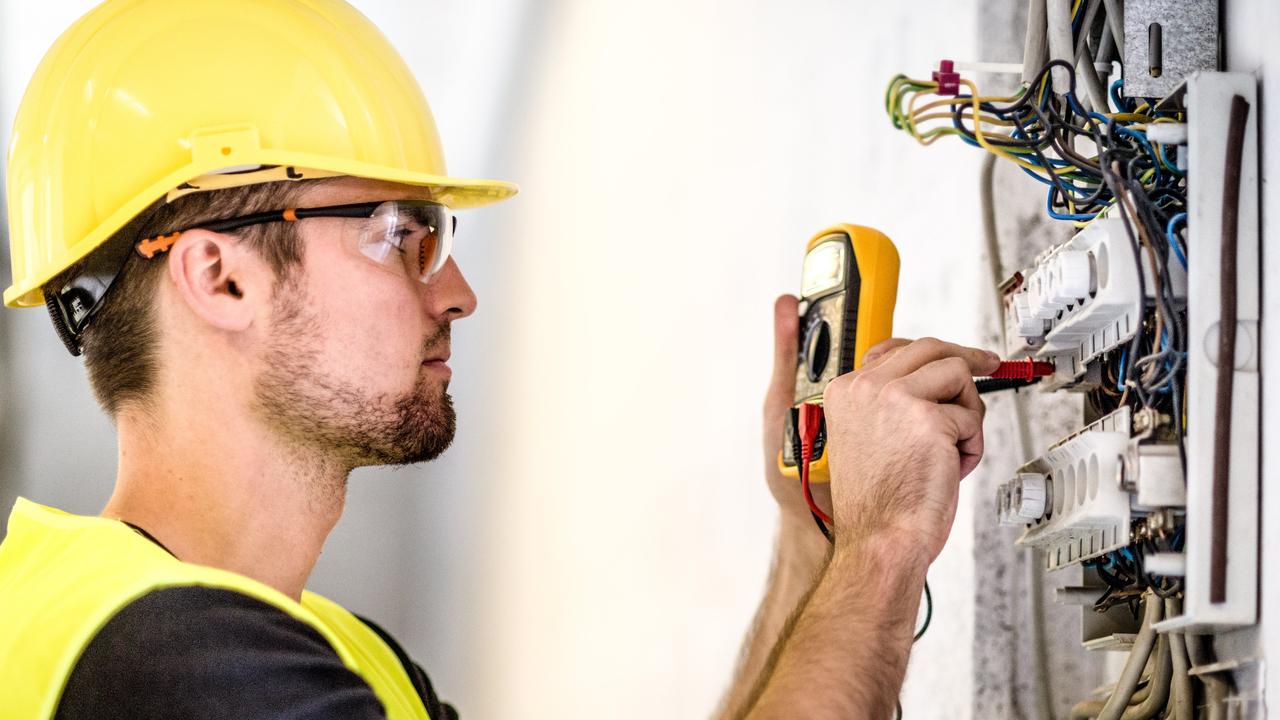
Apprenticeships and digital skills
An additional $2.7 billion over four years is being spent with the aim of creating more than 170,000 new apprenticeships and traineeships for young people.
The money will be spent on the extension and expansion of the Boosting Apprenticeship Commencements wage subsidy to support businesses to take on new apprentices and trainees.
The government will also spend $10.7 million over three years to trial up to four industry-led Digital Skills Cadetship pilots to increase the number of Australians with high-level digital skills in emerging fields such as artificial intelligence, robotics and quantum computing.
The funding will help create more than 460 new scholarships.
In the same vein, it will spend $22.6 million over six years from 2021-22 to set up the Next Generation Emerging Technologies Graduates Program to provide up to 234 scholarships in emerging technologies areas.

Childcare package
An overhaul of the childcare system that will slash fees for working families with two or more children has been welcomed by the sector.
There are hopes childcare fee relief for larger families could be fast-tracked after Mr Frydenberg blaming “IT” dramas for the 2022 start date.
“250,000 families will be better off by an average of $2,200 each year,’’ the Treasurer told Parliament on Tuesday night in his budget speech.
“Giving more parents, especially women, the choice to take on extra work.”
The Morrison government announced the $1.7 billion package will increase the childcare subsidy to a maximum of 95 per cent for the second and subsequent children in care.
A family earning $110,000 a year will have the subsidy for their second child increase from 72 to 95 per cent, and would be $95 per week better off for four days of care.
A family with three children on $80,000 would have the subsidy increase from 82 to 95 per cent for their second and third child and be $108 per week better off for four days of
But the new policy doesn’t apply to “afters” fees for working parents regardless of how many kids you have and only applies when you have two or more children in daycare at the same time.
The news is even worse for parents with only one child - they will secure no fee relief under the plan that is geared towards taking the pressure off parents struggling with childcare fees for multiple children.
The funding will also abolish the $10,560 annual subsidy cap for high-income earners.
Early Childhood Australia boss Sam Page said the move would make childcare more affordable, and give parents wanting to return to work, more choices.
“It is good for children, good for families and good for the economy,” Ms Page said.
“I am a bit concerned about it not coming into effect until the middle of next year because the system is too complex. It should be introduced in a shorter time frame.”

Single home buyers
Single parents have been given a huge cash boost in the property market, with the government introducing a new program allowing them to buy a home with just a 2 per cent deposit.
Housing advocates welcomed the Family Home Guarantee package unveiled by the Federal Government on Saturday as “a good program”, but warned it would still leave lower-income households in the lurch.
Under the plan, announced ahead of next week’s federal budget, single parents with a household income of less than $125,000 would only need to save a 2 per cent deposit to get into the market.
The scheme would target single mothers in particular, with the government estimating that out of the 125,000 single parents who are eligible, 80 per cent are women.
The program would support up to 10,000 single parents with dependants over four years, commencing July 1, 2021.
Everybody’s Home spokeswoman Kate Colvin said the overall benefit would be to those households earning between $80k to $125k a year.
“The real need is for housing for people on low incomes who can’t afford to make the repayments on a new home purchase – a lot of households are earning less than $50k a year,” she said.

Aged care boost
The aged care sector has been given a $17.7 billion boost over the next four years in what has been dubbed a “major overhaul” of the system.
The budget delivered the much-needed funds after recommendations by the Royal Commission into Aged Care which uncovered shocking reports of neglect within the system.
In the overhaul of the aged care sector, it is expected the money will go towards addressing understaffing issues, support for the elderly to stay in their own homes and more resources for residential facilities.
It will fund another 80,000 new home care packages, bringing the total to 275,000 home care packages available, as well as increasing the time nurses and carers are required to spend with residents.
There will be an additional payment of $10 per resident per day to enhance the viability and sustainability of the residential aged care sector, while over 33,000 new training places will be created for personal carers, and a new Indigenous workforce.
“We will provide retention bonuses to keep more nurses in aged care. We will increase access for respite services for carers. We will strengthen the regulatory regime to monitor and enforce standards of care,” Mr Frydenberg said in his speech.
“We will upgrade essential aged care infrastructure in regional and remote areas. This package brings our record investment in aged care to over $119 billion over the next four years. We are committed to restoring trust in the system and allowing Australians to age with dignity and respect”.
At present, there are an estimated 200,000 elderly Australians in aged care facilities.
Health Minister Greg Hunt described the deal as the “largest package in Australia’s history”.
Mr Frydenberg said the government was committed to fixing the problems the royal commission highlighted in its report which it handed down earlier this year.
“We’ve had a royal commission which has indicated that the sector is in dire need of reform,” Mr Frydenberg said.

Part-time workers and mums
The current $450 per month minimum income threshold for the superannuation guarantee will be removed, meaning people on low incomes can still build up a retirement nest egg.
It’s the threshold that causes almost twice as many women as men to miss out on a super contribution when working in insecure, part-time jobs.
The government claims this will improve economic security in retirement for around 200,000 women.
“We will allow those aged over 60 to contribute up to $300,000 into their superannuation if they downsize their home, freeing up more housing stock for younger families,” Mr Frydenberg.
The government will provide $21.2 million over four years from 2021-22 to improve the uptake of the Pension Loans Scheme by providing immediate access to lump sums of around $12,000 for singles, and $18,000 for couples.
It will also introduce a No Negative Equity Guarantee so borrowers will not have to repay more than the market value of their property.
Xavier O’Halloran, director of Super Consumers Australia, said the budget delivers more super for women, people working in the gig economy, and low-income workers.
“It’s a positive step towards ensuring people get super for every dollar they earn. The $450-a-month threshold was an archaic rule from a paper based era that left some people receiving any super for the hours they worked every week,” he said.
“Scrapping this rule will see about 200,000 women and 100,000 men on low incomes earn a combined $90 million in extra super a year. It is an important change to make the superannuation system fairer.”
National security
Despite the huge injection of funds into aged care, it pales in comparison to what’s been thrown at national security, with $270 billion over 10 years going towards Australia’s defence capability.
“To keep Australians safe from these threats – whether domestic or foreign – the Government is providing an additional $1.9 billion over the decade to strengthen our national security, law enforcement and intelligence agencies,” Mr Frydenberg added.

Retirees
Those who sell the family home and are able to put $300,000 into their super – or $600,000 for a couple – will be able to so earlier than before, at age 60 compared with the previous limit of 65.
The work test is also being scrapped, which means people aged between 67 and 74 will no longer need to work for at least 40 hours over 30 consecutive days during the financial year before concessional or non-concessional super contributions are allowed.
Tourism, aviation
They’re among the hardest-hit industries as the coronavirus pandemic rages on, and as a result, the government has earmarked $1.2 billion for a special package designed to keep the sectors afloat while international borders are shut.

Women’s health
Women’s services have been given a huge boost in the federal budget with $354 million in packages being spread across the issues of cervical and breast cancer, endometriosis and reproductive health.
Among the funding announced by Health Minister Greg Hunt and MP Dr Katie Allen on Sunday was a $100 million investment in improving cervical and breast cancer screening programs.
There will also be a $96 million injection for new tests under the Medicare Benefits Scheme for pre-implantation genetic testing of embryos for specific genetic or chromosomal abnormalities prior to pregnancy.
A $47.4 million boost will be given to ensuring the mental welfare of new and expecting parents and $26.9 million in funding for people with eating disorders.
Kirsten Pilatti, chief executive Breast Cancer Network, said the funding would have an acute effect in regional areas.
“It will certainly help us to pave the way for better outcomes for Australians who were diagnosed,” she said.
“I’m so proud that this funding will help to build on the community support that we have right around the country, and ensure that Breast Cancer Network Australia can take the very best emotional care experts out into regional Australia, where we know they are screaming for additional support right now.”
Women’s health initiatives will receive $21.6 million, including education and pain management programs targeting a common condition called endometriosis, which affects one in nine Aussie women.
Telehealth services, which have proved vital in the regions during COVID-19, have also been extended until December 2021 in a $204.6m investment.
Natural disasters
More than $600 million will be offered to community and household projects to mitigate the impact of natural disasters.
There’s also $170 million to strengthen internet and mobile coverage in regional Australia, particularly in bushfire prone areas.
A new National Recovery and Resilience Agency will be set up to lead our response to natural disasters too.

Road upgrades
A $10 billion cash splash on roads to slash commute times was another focus of the budget.
The Blue Mountains in particular is set to benefit from $2 billion in funding – the bulk of the $3 billion slated for NSW projects.
The new infrastructure spending includes $2.03 billion for the Great Western Highway Upgrade – Katoomba to Lithgow – including Construction of East and West Sections in New South Wales.
It will also include $2 billion of initial investment for a new Melbourne Intermodal Terminal designed to get thousands of trucks off busy roads.
New spending will also include $400 million for the Inland Freight Route (Mungindi to Charters Towers) upgrades in Queensland and $161.6 million for the Truro Bypass in South Australia.
There’s also $160 million for agricultural supply chain improvements (Package 1) in Western Australia and $150 million for national network highway upgrades (Phase 2) in the Northern Territory.
In Tasmania, the Morrison government will commit to spending $80 million for Bass Highway safety and freight efficiency upgrades in Tasmania; and $26.5 million for William Hovell Drive duplication in the Australian Capital Territory.

Bucks for booze
The price of a beer keg could be “shaved by a couple of bucks” with small brewers and distillers to receive up to $250,000 in tax breaks.
The Federal Government has announced a support package for the nation’s craft brewers and distillers, which Treasury estimates will see an average of $55,000 put into their pockets.
The changes, which will be unveiled in Tuesday’s budget, will triple the amount of liquor producers can sell before excise tax applies.
From July 1, small brewers and distillers will be able to claim a full refund on any excise they pay up to $350,000 annually.
They are currently able to claim 60 per cent of paid excise, up to $100,000 annually.
Mr Frydenberg said the measures would spark investment in the sector, which currently employs around 15,000 people.
“This change will allow these small businesses right around Australia … to go and hire more people, to go and invest in their business to grow, to get the new equipment and machinery that they need,” he said.

Clean energy
Low emissions technology could be cheaper in Australia under a plan to attract international investment in clean energy.
The Federal Government has confirmed a new $1.6 billion plan focused on low emissions technology partnerships, including clean hydrogen and energy storage.
The proposal would see $3 to $5 added to every dollar invested in Australia, which the government claimed would create up to 2500 jobs.
Prime Minister Scott Morrison insisted the investment would work in tandem with Australia’s existing export industries, which would not be shut down to reduce emissions.
He said the investment would protect jobs in energy-reliant businesses while creating new ones in the low emissions technology sector.
“These partnerships mean Australia will keep leading the way in low emissions technology – that also means more jobs here at home,” he said.
“The world is changing and we want to stay ahead of the curve by working with international partners to protect the jobs we have in energy-reliant businesses and create new jobs in the low emissions technology sector.”
There’s also more than $480 million in new funding for the environment, including $100 million to protect Aussie oceans.



